
What are Resilience Hubs?
Resilience Hubs are community-serving facilities augmented to support residents, coordinate communication, distribute resources, and reduce carbon pollution while enhancing quality of life. Resilience Hubs can meet a myriad of physical and social goals by utilizing a trusted physical space such as a community center, recreation facility, or multi-family housing building as well as the surrounding infrastructure such as a vacant lot, community park, or local business. More Information
Three Resilience Hub Modes
Resilience is the ability of people and their communities to anticipate, accommodate and positively adapt to or thrive amidst changing climate conditions and hazard events. Resilient communities enjoy a high quality of life, reliable systems, and economic vitality, and they conserve resources for present and future generations. The term resilience is often used interchangeably with emergency preparedness and response, but these elements only address part of this important concept. As such, Resilience Hubs serve communities in three operating conditions: Everyday, Disruption, and Recovery.

Everyday
At its core, the Resilience Hub serves as a central point to design and implement a strategy to address root causes of vulnerability and help the community thrive. In addition, the Resilience Hub can deliver preparedness messaging to the communities the Hub serves, and site leaders can work with trusted community leaders to disseminate information and facilitate stronger community ties before a disruption.

Disruption
A community’s Resilience Hub can be the central point for gathering, assessing impact, sharing stories, assembling information, accessing resources, and spearheading response. Ideally, residents, businesses, and organizations will collectively manage the Hub including both internal and external communications.

Recovery
Resilience Hubs can play a critical role in post- disruption recovery and ongoing communications needs. For resilient communications, the site can remain a central point for gathering, sharing information, and accessing resources. Hubs can also provide space for additional experts, aid organizations, volunteers, and support networks to gather and better understand and help meet community needs.
How Mosques can become Resilience Hubs
Mosques can serve as resilience hubs by providing essential services and support during emergencies and disasters, enhancing community cohesion and preparedness. They can function as gathering centers for disaster response, offering shelter, food, and medical assistance. By leveraging their existing networks and volunteer resources, mosques can facilitate training in emergency response, promote awareness about local hazards, and foster partnerships with local organizations and authorities. Additionally, providing educational programs on disaster preparedness and hosting community workshops can empower residents to take proactive steps, making the entire community more resilient in the face of crises. These essential services are key requirements in becoming an accredited Beacon Mosque.
Three Options for Resilience Hubs
Resilience is the ability of people and their communities to anticipate, accommodate and positively adapt to or thrive amidst changing climate conditions and hazard events. Resilient communities enjoy a high quality of life, reliable systems, and economic vitality, and they conserve resources for present and future generations. The term resilience is often used interchangeably with emergency preparedness and response, but these elements only address part of this important concept. As such, Resilience Hubs serve communities in three operating conditions: Everyday (>99% of the time), Disruption, and Recovery.
Base
The building meet the minimum criteria for being a Resilience Hub across all three resilience modes including:
- Strong community support and leadership
- A site that is well-trusted
- A building or set of buildings
- Resilient energy systems
- Resilient communications systems
- Base programming and services co-developed with community
Optimal
The building meets all the minimum criteria set for the Base Hub but will also incorporate a range of expanded services and resilience-enhancing retrofits. Illustrate components include:
- Water capture and filtration onsite
- Air filtration
- Solar with battery backup
- Community gardens
Ideal
Ideally Resilience Hubs will have (and meet) ambitious goals that provide community benefits year-round. Illustrative ambitious goals, co-developed with community members and partners, include:
- Greywater reuse onsite
- Biophilic design standards
- Net zero energy
- Having community solar benefits for the surrounding community.
Examples of Mosques as Resilience Hubs
We have seen Beacon Mosques and Islamic Centres provide various services and fit in within the ‘base’. ‘optimal’ or ‘ideal’ category of a resilience hub. Below are some examples of services provided by Mosques in the UK that enable the building to become a resilience centre, becoming a key hub for community support and response.
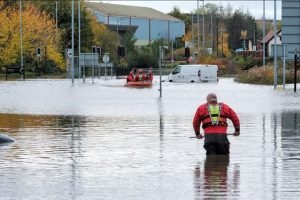
Responding to Floods
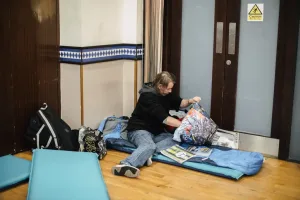
Winter Support

Emergency Support
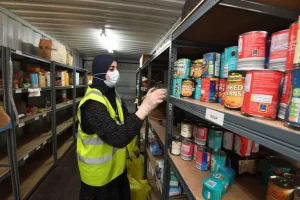
Food Banks
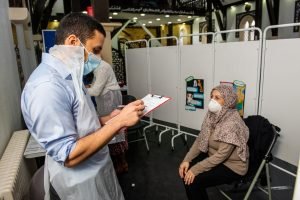
Medical Support
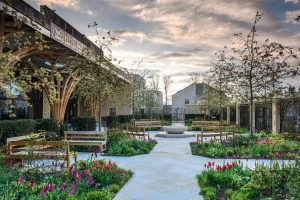
Communal Gardens